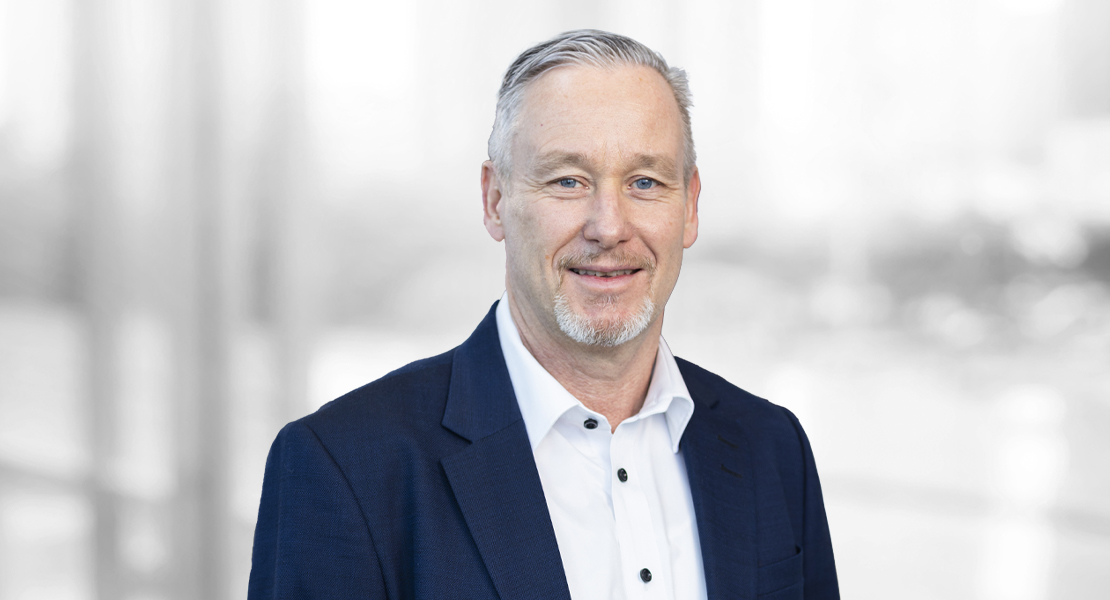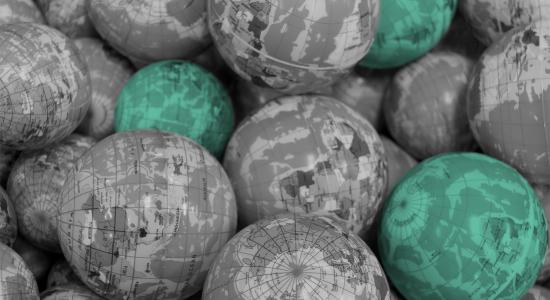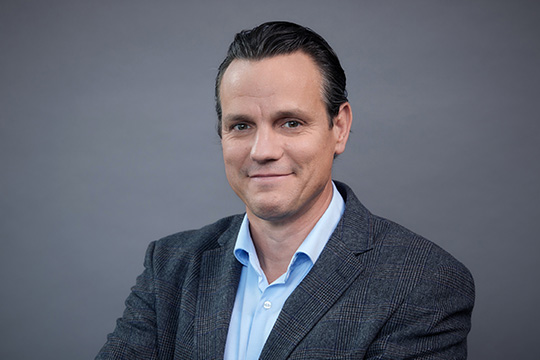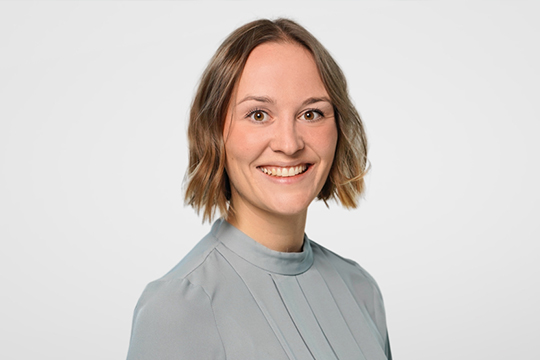How is Nokia responding to the challenges of building and implementing sustainability strategies? In this interview, Mikael Rylander, Technology Leadership Officer at Nokia, talks about innovation and holistic solutions, to be able, for example, to decouple growing data traffic from energy consumption.
Let´s start with the topic of the greenhouse gas emissions. What are the challenges to reduce the Scope 3 emissions within the ICT industry? And how does Nokia deal with them?
The Scope 3 emissions are rarely under our direct control. But as we see our products and our services to be a more and more integral part of society, we feel that we, together with the industry, have a huge potential to positively impact and reduce potential greenhouse gas (GHG) emissions.
One challenge our industry faces is how to decouple growth in data traffic from energy use. Our commitment is to reduce GHG emissions by 50% by 2030 based on 2019 reported emissions – and others have made similar commitments.
At the same time, the traffic might grow as much as 27 times, according to traffic models by Bell Labs Consulting. That is the challenge and, of course, in a wider perspective, that means that we need to maximize the positive impact of digitalization on industries and society while simultaneously continually minimizing the use of energy and other natural resources.
We are tackling that from numerous directions. It is critical that we continually improve the energy efficiency of our products. If new innovation is needed – a new way to reduce emissions or reuse energy – we need to be very fast to deploy it.
Of course, the emissions from the use of the sold products are the biggest contribution to the Scope 3 emissions from Nokia. The second biggest one is the purchased goods and services. Do you think supplier management is also an important level for Nokia?
Definitely. I mean, we work with the whole supply chain as well as with specific companies in our supply chain. So, this is a holistic problem, and it needs a holistic solution. We have robust practices and procedures to drive this approach with our suppliers. We are working with these issues, yes.
Do you also work together with the operators? Are there any specific demands operators have for you?
Yes, I mean they see the potential, but they also see that the traffic is growing. We are working with them from many angles. But I mean the thing that is important is making our products in a way that it’s possible to orchestrate the energy need and manage the energy consumption to level out peaks and troughs. Peaks are not wanted in the grid because sometimes you then need to start up energy sources that are not so clean.
We work with our customers globally, looking at their whole network, and optimizing its power consumption. We investigate and observe their equipment and the architecture of their network and suggest changes. We are also working with them to reuse materials, and refurbished components and parts in new products. These are just two areas where we work with our customers.
And which measures help to not only achieve the environmental aspect but also the economic sustainability in the form of green business cases?
To address the challenges facing telcos and society, we must all reduce use of natural resources, which in turn reduces cost, bringing cost savings and direct economic benefits. But also, enabling the use of the networks and digital solutions built on our equipment and services via both telco operators and enterprises can deliver new revenue streams and greater innovation.
In other words, our solutions provide the infrastructure, the fabric if you like, that supports a lot of innovation. And, of course, that means new revenue streams.
Do you somehow quantify the enablement that you provide for other industries?
This is one of the challenges. We're looking into it from a research point of view, as to whether we could quantify and measure this fairly. This is an interesting topic where we are investing time, money and effort in, and hopefully we can come back with more modeling on this and more quantitative data beyond today´s often qualitative data.
Let's turn to the topics of 5G and IoT. What environmental challenges do you see for telco operators in their expanding rollout of 5G?
I'll start with emphasizing that 5G is the only technology that can really help to digitalize societies and 5G was designed to bring greater energy efficiency per bit, as much as 100 times. We have looked into customer networks – we've worked with, for example, Telefonica on a study that showed that 5G networks are up to 90 percent more energy efficient per traffic unit than legacy 4G networks.
That is just a couple of examples. I must also say that the introduction of new technologies like artificial intelligence and machine learning is also key to orchestrate and better manage networks. Again, we can explain it more simply that we need to make sure our products and services are used as efficiently as possible at all times trying, to work with peaks and troughs in real time so the load is balanced.
Do you have an example where you did contribute to the energy efficiency of your product?
Yes, we have done measurements with customers – Telefonica was one. We are also working with other operators to see how we can use their assets and our products to both reduce the power consumption and level out the peaks and troughs in the grid. We have shown some solutions at the Mobile World Congress.
When will Open RAN be equivalent in performance compared to Single RAN and when will Open RAN be equivalent in energy efficiency?
Open RAN can be many things to many people but if we talk about Open RAN as a platform with open interfaces and a platform where you can have different payloads, different applications that’s another story. If that's what we're talking about, I would say that Open RAN enables you to run many payloads on a piece of hardware.
This will give you a couple of opportunities. One is, to shut down the hardware or parts of the hardware to save energy. Or, to shut down other hardware or parts of hardware because you can concentrate your loads to one infrastructure. So, in that sense, Open RAN opens up a lot of possibilities for enterprises and operators. So, you can generalize and it's easy to run different kinds of applications. And in in most cases, if you really specialize on something, you can improve for that purpose.
We can compare cars. If you optimize a car for a taxi service, it is completely different to if you optimize the car for a Formula1 race. How to compare them? You of course can, but they could be good for different things. So, the time when Open RAN is comparable in performance to Single RAN and power efficiency is complex. It all depends on how you count and how you use the equipment. What I can foresee if I look at the decade ahead and more towards the end of the decade, is that the hardware modules in Single RAN and also in Open RAN will probably be more and more alike. There will still be special hardware acceleration that providers, just like ourselves, can infuse into the network.
That’s the long answer but I think it's not far away. Especially, if you work with the sort of generic approach to be able to stack payloads and really sort of sweat your assets, but from a sustainable perspective.
Open RAN: Opportunities and Challenges
What are current challenges in implementing a circular economy approach for Nokia?
Our customers are interested in circular products and services balanced with the critical resilience and reliability of telco networks. Orange and Nokia are pushing forward the circular agenda having signed a first frame agreement on delivery of circular products and parts and refurbishment services in 2021. Then of course, one challenge is the lack of guidelines to track, measure and report on circular practices...we have them for climate and emissions but not yet for circular products and services.
Nokia actively contributes to work on circular standards. There is a growing list of substances designated as potentially harmful and regulated to be removed. This requires investment and constant vigilance and robust processes by companies through their supply chain. As part of the process we publish the Nokia Substance List updated on an annual basis and strive to meet or exceed regulation.
Do you see a potential in reusing those devices in continents which have not so strict sustainability laws.
I mean, if your question is concerning harmful substances, no. That doesn't really help the global sustainability. If we just move products from one country to the other. I think this is more about working with the legislators and getting their perspective early enough and also having a robust h model in place. So, I think it's more dialogue and getting the legislator to realize the ecosystem and how it's built up.
So, would you say the harmful substances are most important for the breakdowns to make sure that you have a good recycling? As far as I understood, usually the products are designed that harmful substances only are a minor risk during the deployment of the product. Is that correct?
No, what I mean is that if you have, let's say, some sort of plastic and you are then building up a recycling process around that plastic. You can, of course, then remove harmful substances, but if that's not possible for that kind of material because it's so ingrained, then if you know or suspect that it will come up on the harmful substance list, the reuse of that material is no point. Then you need to find new material and the recycling ecosystem dies. And if there are unclarities about the material, then no one wants to invest in that kind of recycling.
That's, where I think the dialogue needs to be. So scientists can look at this holistically and decide that the benefit of removing the substance is greater than the positive impact of the recycling or the other way around. Again, I think it's a dialogue, a holistic perspective.
The circular economy, of course, deals with the end of life. My question was targeting at the reuse of the still working device. If this is still possible, of course. Maybe this is another approach to relocate it if it's still working and then afterwards the recycling should be another step.
Ah. So, what we are working with. We have a service working with refurbishing used equipment, and deploying it again, either in the same customer network or reselling to another customer or even using in our own labs. So that's a service we have, and we have had for many years. In fact we have 25 years of circular practices.
As you said, the second circular economy is always a holistic approach, which impacts the whole supply chain. How do you work together with the supply chain and, especially, with the operators to ensure that the circular economy is working?
I think the biggest example, I have actually already mentioned. It's twofold. One is to work with the operators and the enterprises on using recycled material and showing that it doesn't affect the characteristics of the product and it doesn't affect the reliability to do measurements and calculations. And that's a success. No one says no to that.
Secondly, to use the service we have, where we take back equipment, either dismantling it and doing the recycling or refurbishing it, so it's reused either back in another part of the customers network, where it came from, or to someone else that they can use the equipment or our own use.
Yes, so maybe one regarding the innovation. Do you see interesting approaches to encourage innovation for sustainable products, which we haven't mentioned yet, and how could companies develop more into this direction?
Yes, we see a lot of innovation in this area. Of course, within the company but also in the industry. I think there are many ways to stimulate that, and we are. It could be investing in this technology or in companies that have this innovation. It can be networking with them to show the capability of our products and services to help out.
So, I think we work rather broadly internally, externally, collaborating, investing in this. I think it has a lot of attention in society. So, the focus on this is becoming bigger and bigger, I would say. And collaboration is key to accelerating innovation in sustainable products and solutions.
The circular economy is quite an innovative way to think business and to do business. How do you ensure within the company of Nokia that everyone has a switch to innovation thinking to ensure the circular economy approach?
Communication. I think it's very difficult, as a member of society, not to realize what happens around us and what kind of focus is on sustainability. But then it is to encourage innovation and, I mean, that is something that we live by. Its focused research. It is also encouraged in daily work. We have all kinds of things – seminars, competitions, lots of communication, recognition innovation in this space, etc.
So, it's a battery of things we do to encourage. And of course, when we find ideas, we invest in them, so people see that there is a way to bring out the innovations to our customers and society.
Would you like to send a message to telco operators, to other vendors regarding sustainability?
I would like to encourage our customers and the industry sector to come back to us, have a dialogue, describe what problems or solutions they see. I would say in all more holistic meetings and in many product meetings we have on specifics, sustainability comes up. It's really present. I think, our customers find it's easy to preach this subject and start discussing both opportunities and challenges with us.
But of course, I'd like to have that dialogue even more. We are an omnipresent company, so we should be able to facilitate discussions on this easily and quickly.
Which are currently the biggest challenges you have in building a sustainability strategy? We already talked about some, but what is the most present challenge you see for Nokia at the moment?
First and foremost is to continually improve the energy and material efficiency of our products...this is where we can have the greatest impact. Second is to drive the same issues in our own operations, accelerating the use of electricity from renewable and decarbonized solutions and driving efficiency practices across our own operations. How to truly close the digital divide so that no one is left behind. And also, how do we ensure we measure our actions and outcomes accurately and data is comparable and transparent across industry and society.
But then, also, how to get research into place so we can make modeling. How can we see that digitalization is actually helping the society? And how do we measure it? We think that is key. We make sure that we all do the right things. Also, to have an inclusive dialogue with our customers, stakeholders, and all the people that we employ. That is also in focus.
Thank you for the interview, Mr Rylander!









